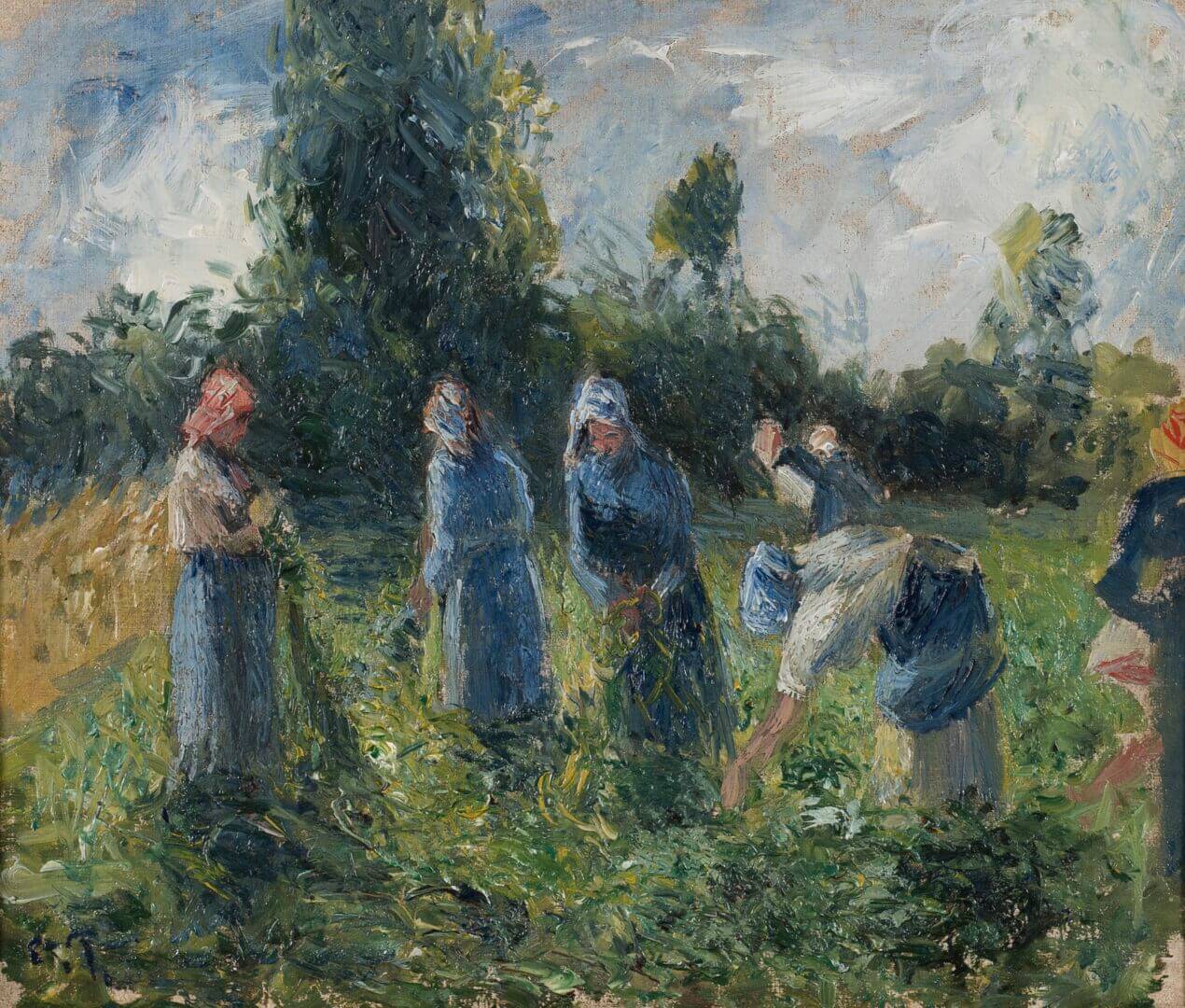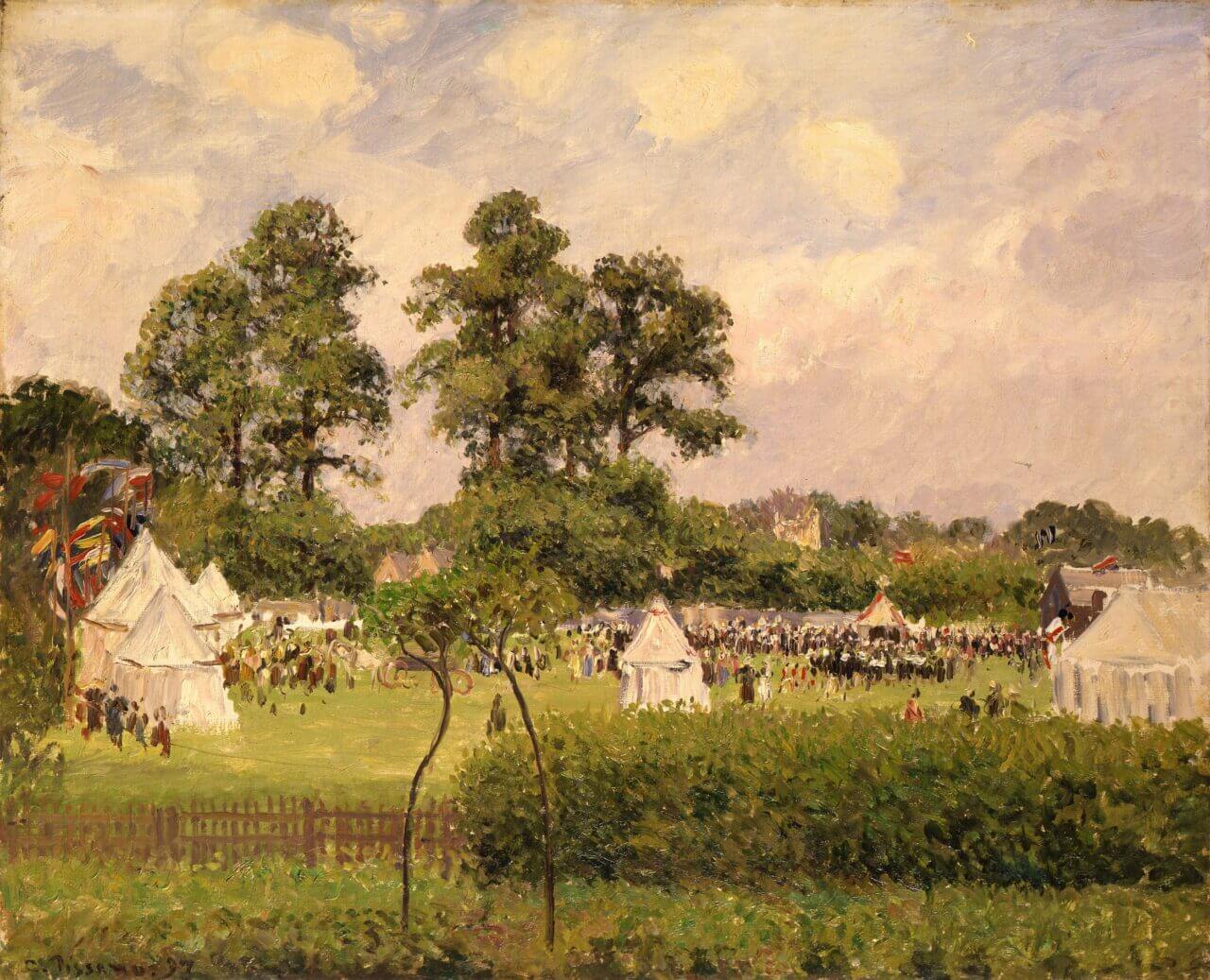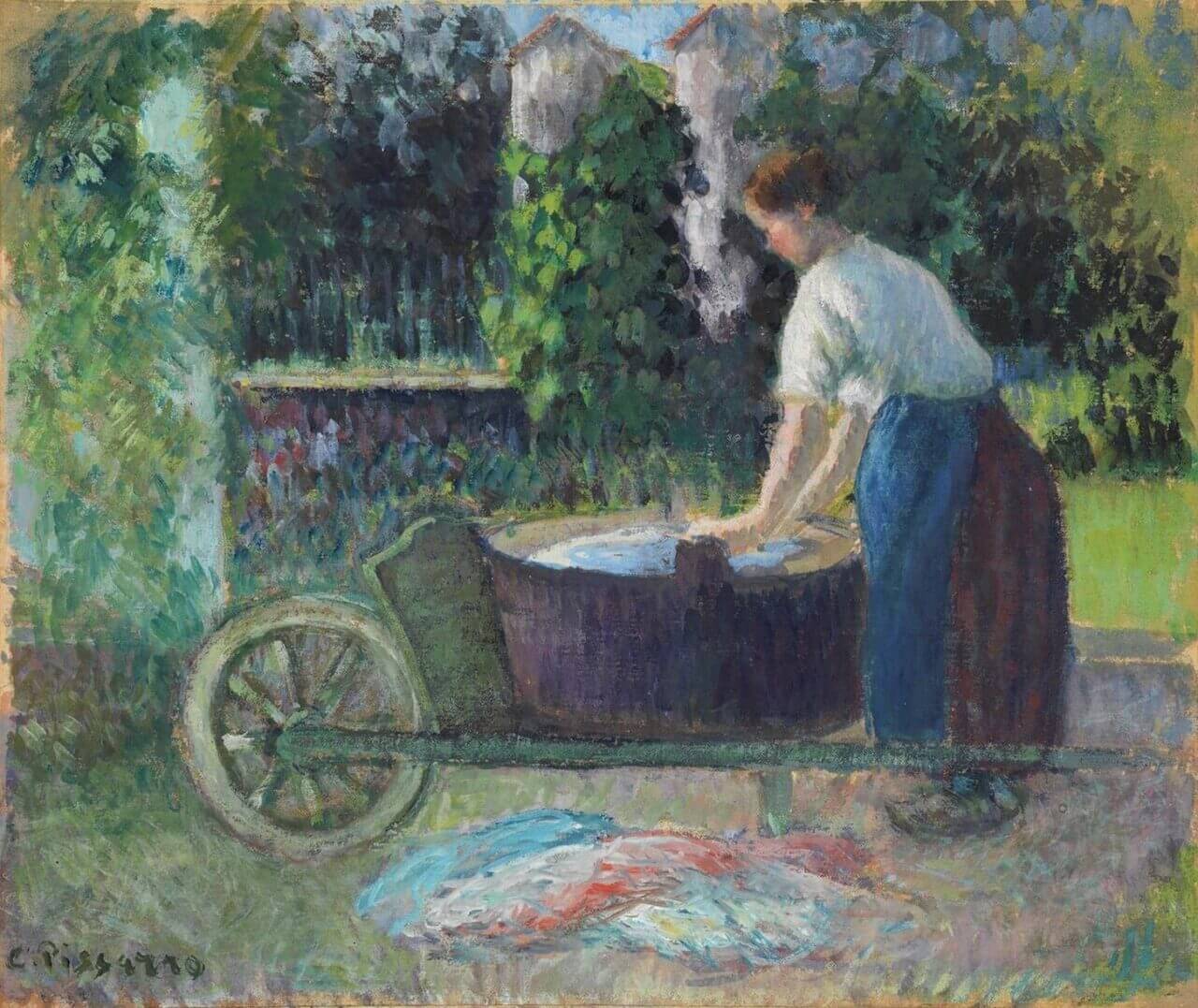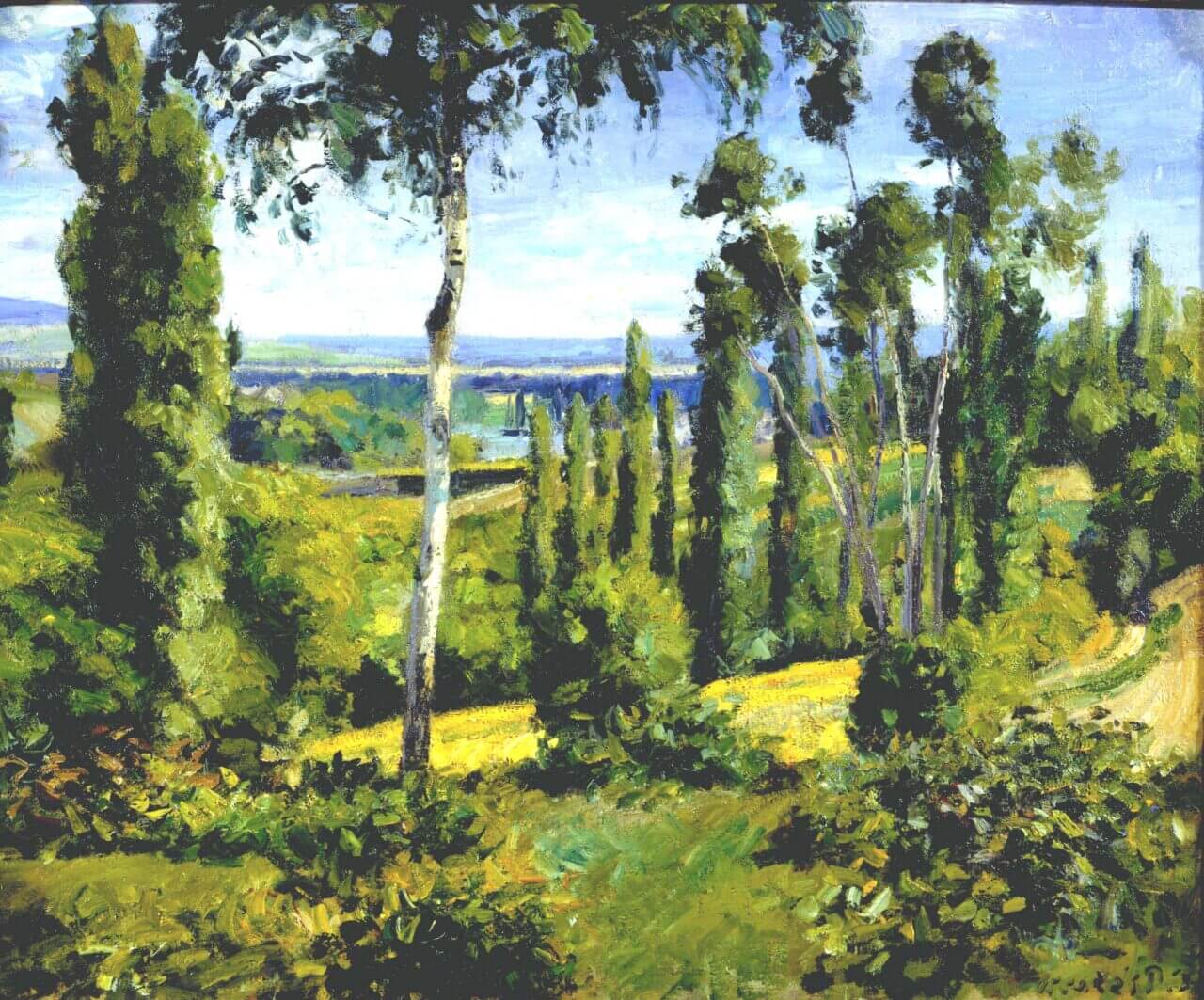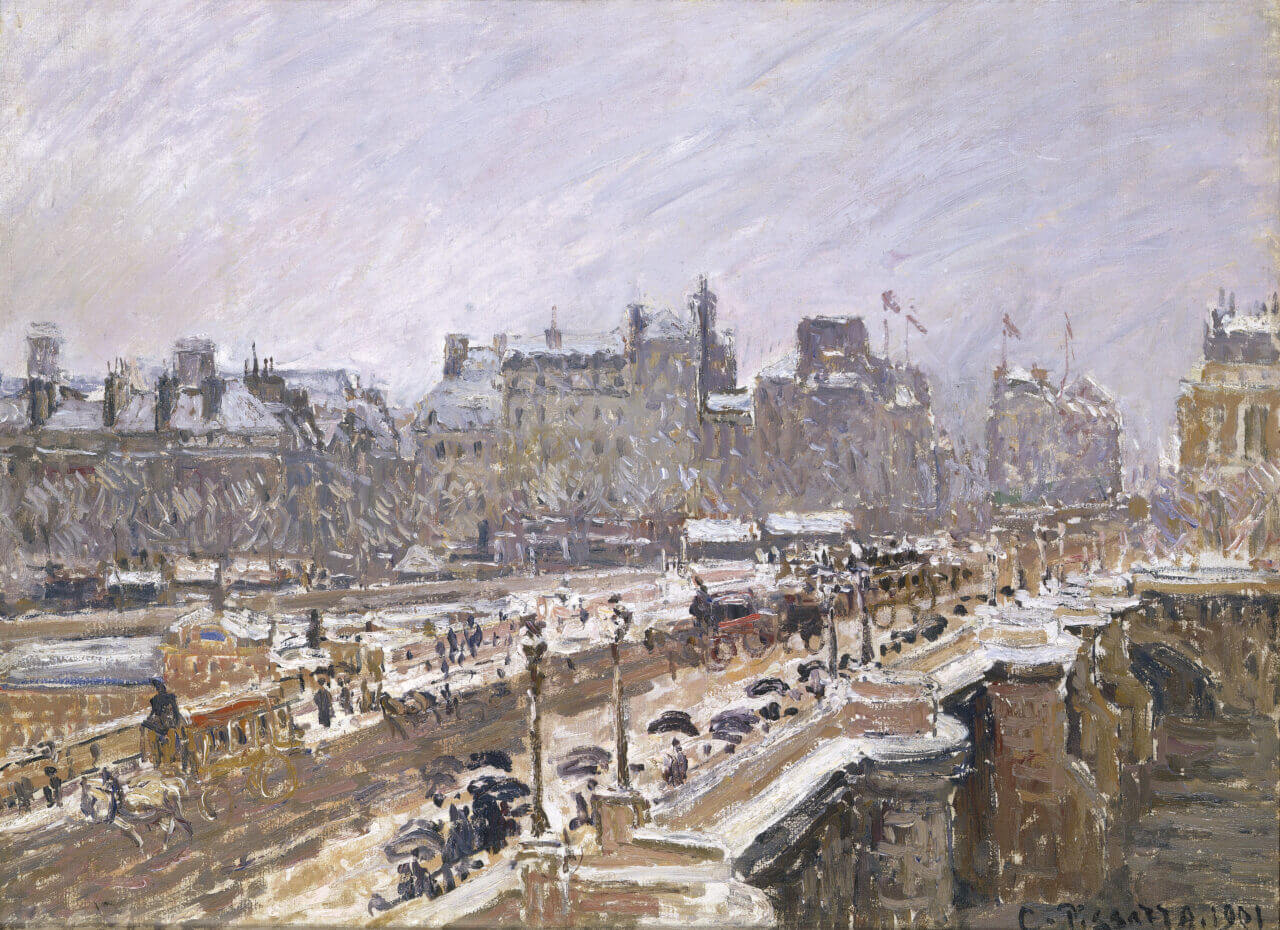Camille Pissarro, Self-Portrait, 1873, Musée d’Orsay, Paris
Camille Pissarro may not be the most famous of the French Impressionists – that honour typically belongs to Claude Monet – nor was he, perhaps, as consistently innovative as Caillebotte or Degas, but without Pissarro, there many never have been such a society as the Impressionists. Scholar John Rewald called him ‘the dean of the Impressionist painters’, and it was in large part thanks to his ‘balanced, kind, warm-hearted’ and wise demeanour that the group of disparate and often squabbling personalities managed to organise and exhibit together in eight landmark shows between 1874 and 1886. Pissarro was the only member of the group to show his work in all eight of the Impressionist exhibitions.
Born in what is now St. Thomas, but was then part of the Danish West Indies, the French-Danish Pissarro was fascinated by art from an early age. After attending boarding school in Paris and spending a period painting and sketching from life in Venezuela, he returned to Paris in 1855 to study in earnest. Like many of his fellow painters of modern life, Pissarro found the traditional Parisian studio practice a bit stifling, and he sought out an artist he admired – Corot – for advice and tuition. It was Corot who encouraged the young Pissarro to paint en plein air, although the two differed on their attitudes toward the finishing of a painting: Corot would frequently return to his studio to add the final touches and to complete a work started out of doors, while Pissarro maintained that, in order to capture the truest view of the landscape, he must finish his painting on the spot.
Camille Pissarro, La Route d’Osny, 1883, previously with Simon C. Dickinson Ltd
Camille Pissarro, La Cueillette des pois (Harvesting peas), c.1880, previously with Simon C. Dickinson Ltd
Camille Pissarro, Fête de Jubile à Bedford Park, Londres, 1897, previously with Simon C. Dickinson Ltd
In 1863, Pissarro’s paintings were among those refused from the Official Salon and sent to the so-called ‘Salon des Refusés’. In 1870-71, Pissarro and his family relocated to London when the Franco-Prussian War broke out on the Continent. There, he met the dealer Paul Durand-Ruel, with whom he would continue to do business throughout his life, and, through Durand-Ruel, Claude Monet. Together, the two artists studied and admired the work of English landscapists like John Constable and J.M.W. Turner, sharing their passion for painting outdoors. When they returned to Paris, Pissarro, Monet and thirteen other artists established the group that became known as the Impressionists, staging their first exhibition in 1874. Pissarro continued to focus his attention on down-to-earth subject matter – the natural landscape (whether rural or urban), labouring peasants, and the changing seasons – rather than the grander subjects of the opera, ballet, or activities of the upper classes. He continued to paint until his death in 1903, and, when an eye infection forced him to work indoors, he set up his easel in front of the window so that he could continue to respond directly to the natural landscape. Pissarro is primarily known as an Impressionist, although he also made noteworthy contributions to the field of Neo-Impressionism during the years between 1885 and 1888, after an encounter with Seurat and Signac led him to a period of experimentation with Pointillism. He ultimately abandoned this new style, finding it too artificial and contrived.
Camille Pissarro, Le Boulevard Montmartre, fin de journée, 1897, sold at Sotheby’s London, 19 June 2019, lot 9 for £7,145,900
Camille Pissarro, Le Rue Saint-Lazare, temps lumineux, 1893, sold at Christie’s New York, 11 November 2018, lot 10A for $12,350,000
Camille Pissarro, Le Pont Royal, Après midi, temps couvert, 1903, sold at Sotheby’s Paris, 23 March 2018, lot 204 for €1,389,000
Pissarro did not sell a great deal during his lifetime, but, like many other Impressionists, he has achieved an elevated and seemingly unwavering popularity in the 120 years since his death. Of the artist’s top 50 prices at auction, 44 were set in the 21st century, and 20 of the top 50 were set within the past decade. 13 of the top 50 prices for Pissarro were achieved by his cityscapes, which feature the broad boulevards of Paris and are painted from the elevated perspective of an upper-story window, while only three examples date from the artist’s experimental Neo-Impressionist phase. As is typically the case with Impressionist works, collectors are attracted to typical and classic subjects and compositions – for Pissarro, this means either Parisian panoramas or bucolic country scenes, perhaps with rural peasants at work, as we see in La Lavandière (1899) – in excellent condition, and with complete and historic provenance.
Camille Pissarro, La Lavandière, 1899, currently with Simon C. Dickinson Ltd
Pissarro has also been the subject of numerous, and regular, dedicated exhibitions, including – most recently – the Ashmolean’s Pissarro: Father of Impressionist (2022), Camille Pissarro: Studio of Modernism at the Kunstmuseum Basel (2021-22), Camille Pissarro: Pissarro in Dulwich at the Dulwich Picture Gallery (2019) and Pissarro at the Van Gogh Museum in Amsterdam (2019). In addition to these, Pissarro’s work features regularly in International exhibitions dedicated to various aspects of Impressionism.
Camille Pissarro, La Campagne aux Environs de Conflans Sainte-Honorine, 1874, previously with Simon C. Dickinson Ltd
Camille Pissarro, Le Pont Neuf, Effet de Neige, 1901, previously with Simon C. Dickinson Ltd




